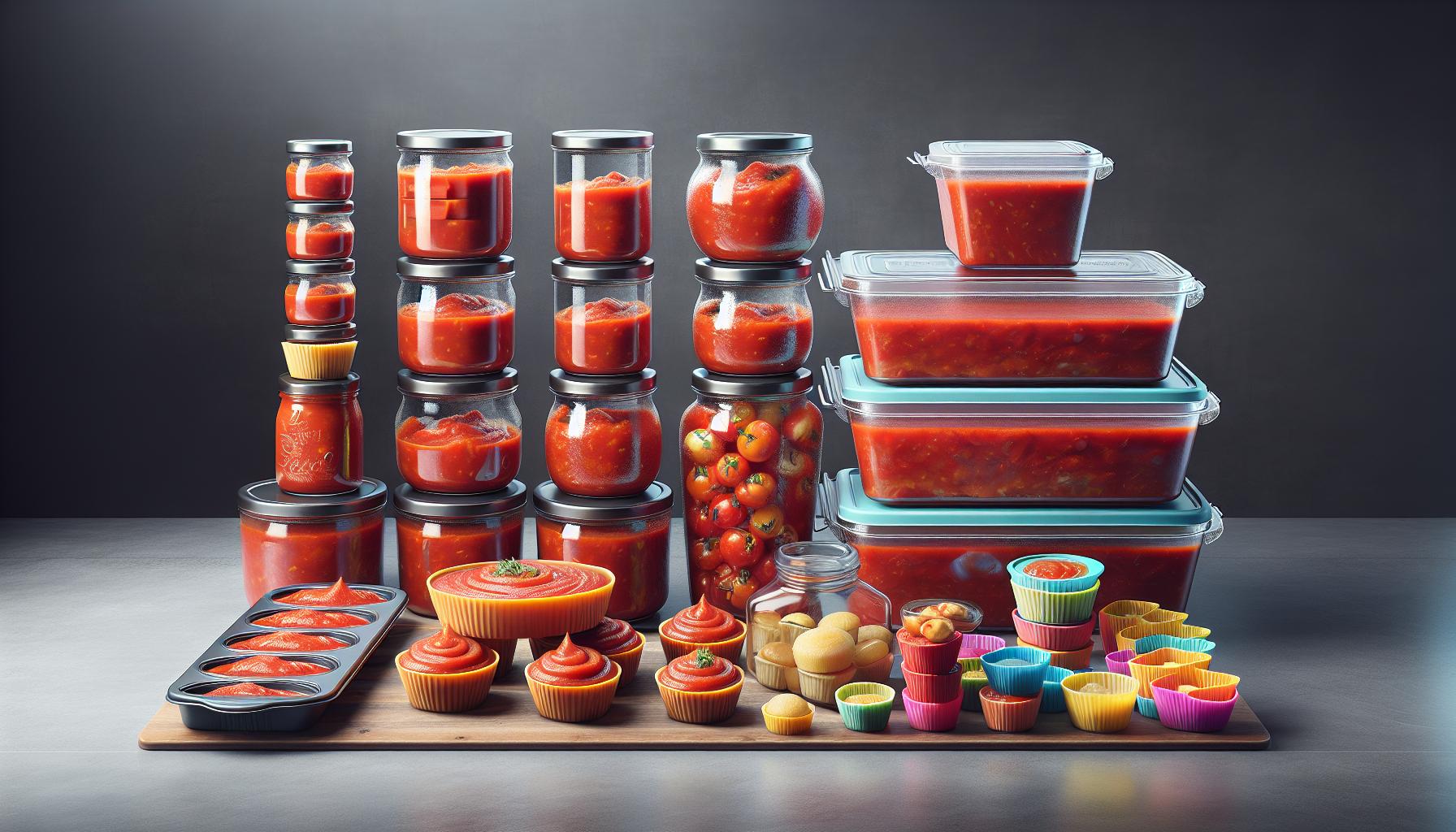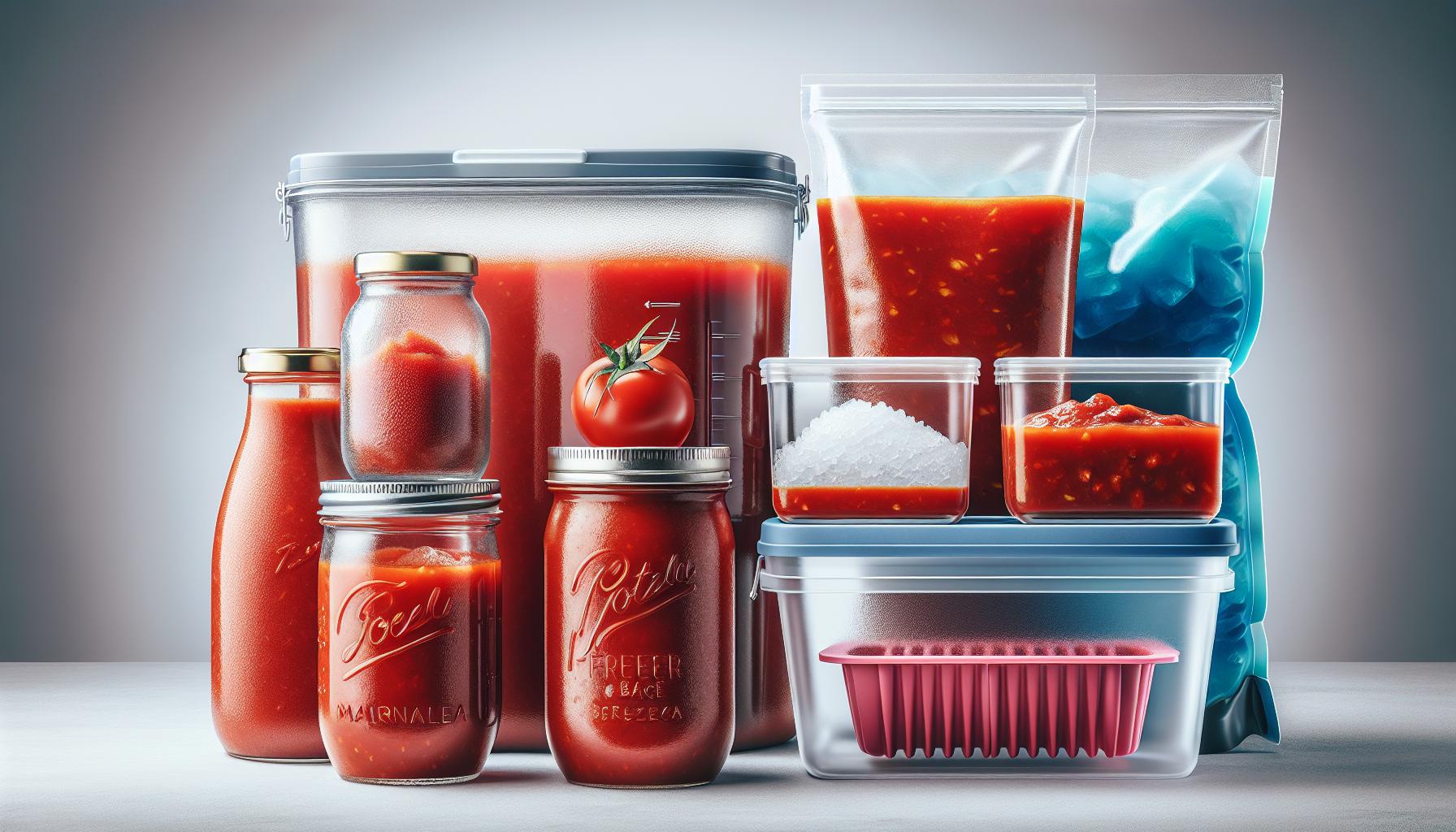Making homemade marinara sauce is a labor of love but finding time to cook it from scratch isn’t always possible. That’s why freezing marinara sauce has become a popular solution for busy home cooks who want to preserve their favorite sauce for future meals.
Marinara sauce can be frozen for up to 6 months when stored properly in airtight containers or freezer bags. The key is removing excess air and allowing the sauce to cool completely before freezing to maintain its fresh flavor and prevent freezer burn.
Smart storage techniques make the difference between mediocre and exceptional frozen marinara sauce. From selecting the right containers to proper cooling methods this guide reveals professional tips to help home cooks preserve their sauce’s vibrant flavors and smooth texture for months to come.
“1. Cool sauce completely
Proper cooling prevents container damage and maintains the marinara sauce’s quality during freezing. Place the hot marinara in a wide, shallow container to speed up the cooling process. Let the sauce reach room temperature on the counter for 1-2 hours before freezing.
Safety tip: Don’t leave marinara sauce at room temperature for more than 2 hours to prevent bacterial growth.
Quick cooling methods:
- Transfer sauce to multiple smaller containers
- Place container in an ice bath
- Stir occasionally to distribute heat evenly
Monitor the temperature by:
- Using a food thermometer (target: 70°F/21°C)
- Testing container temperature with hands
- Checking sauce consistency (thickened, not steaming)
Once cooled, the marinara sauce develops a slightly thicker texture, signaling it’s ready for freezer storage. Keep the container uncovered during cooling to prevent condensation from dripping back into the sauce.
2. Portion into containers

Divide marinara sauce into serving-size portions to maximize freezer efficiency. Airtight containers protect the sauce from freezer burn while maintaining its authentic flavor. Glass containers work well for long-term storage, while heavy-duty plastic containers offer lightweight convenience.
Here are the recommended storage options:
- Glass containers: Perfect for maintaining temperature stability
- Plastic containers: Ideal for stackable storage solutions
- Freezer-safe bags: Excellent for space-saving storage
- Silicone muffin pans: Create individual portions for single servings
Leave 1 inch of headspace in rigid containers to accommodate sauce expansion during freezing. For freezer bags, remove excess air before sealing to prevent ice crystal formation.
Pro tip: Use an ice cream scoop to portion sauce into muffin pan wells. Once frozen, transfer these individual portions to a freezer bag for easy access to small amounts when needed.
| Container Type | Advantages | Maximum Storage Time |
|---|---|---|
| Glass | Temperature stable | 6 months |
| Plastic | Lightweight | 4-6 months |
| Freezer Bags | Space-saving | 3-4 months |
| Silicone Molds | Individual portions | 3 months |
3. Leave ½ inch headspace

Leaving proper headspace prevents marinara sauce from expanding and cracking containers during freezing. A ½ inch gap at the top of containers creates the optimal space for sauce expansion. For glass jars specifically, fill them only ¾ full to accommodate the natural expansion that occurs when liquids freeze.
Here’s how to measure proper headspace:
- Pour sauce to the container’s shoulder line
- Leave ½ inch between sauce surface and lid
- Measure space using a clean ruler
- Wipe container rims clean before sealing
| Container Type | Required Headspace |
|---|---|
| Glass Jars | ¾ inch |
| Plastic Containers | ½ inch |
| Freezer Bags | 1 inch |
| Silicone Molds | ¼ inch |
Overfilled containers lead to sauce leakage during freezing, while too much headspace allows unnecessary air exposure. The ½ inch guideline creates the perfect balance for most container types, protecting both the sauce quality and storage vessel.
4. Seal and label with date

Proper sealing creates an airtight environment that protects marinara sauce from freezer burn. Press out excess air from freezer bags before sealing or secure container lids tightly to prevent leaks. Each container requires clear labeling with:
- Name of sauce
- Date of freezing
- Portion size (cups or ounces)
- Any special ingredients or variations
Use a permanent marker to write directly on freezer bags or apply freezer-safe labels to containers. A standardized labeling system helps track multiple batches of sauce effectively. Place the date in a visible location on the container’s front panel rather than the lid or bottom.
For glass containers, verify the lid is secured properly by turning the container upside down before freezing. With freezer bags, squeeze out air while zipping to create a vacuum-like seal. Double-check all seals before transferring containers to the freezer to maintain optimal freshness.
5. Freeze up to 6 months
“
Properly stored marinara sauce maintains optimal flavor for 6 months in the freezer. Place sealed containers in the back of the freezer where temperatures remain most consistent. Arrange containers in a single layer until frozen solid, then stack them to maximize space.
Storage Duration Guide:
| Container Type | Maximum Storage Time | Optimal Temperature |
|---|---|---|
| Freezer Bags | 6 months | 0°F (-18°C) |
| Plastic Containers | 4-6 months | 0°F (-18°C) |
| Glass Jars | 3-4 months | 0°F (-18°C) |
Keep the freezer door closed as much as possible to maintain stable temperatures. Label each container with a “use by” date 6 months from the freezing date. Store similar items together in the freezer to create an organized system that makes rotation easier. Check containers monthly for signs of freezer burn or damage.



